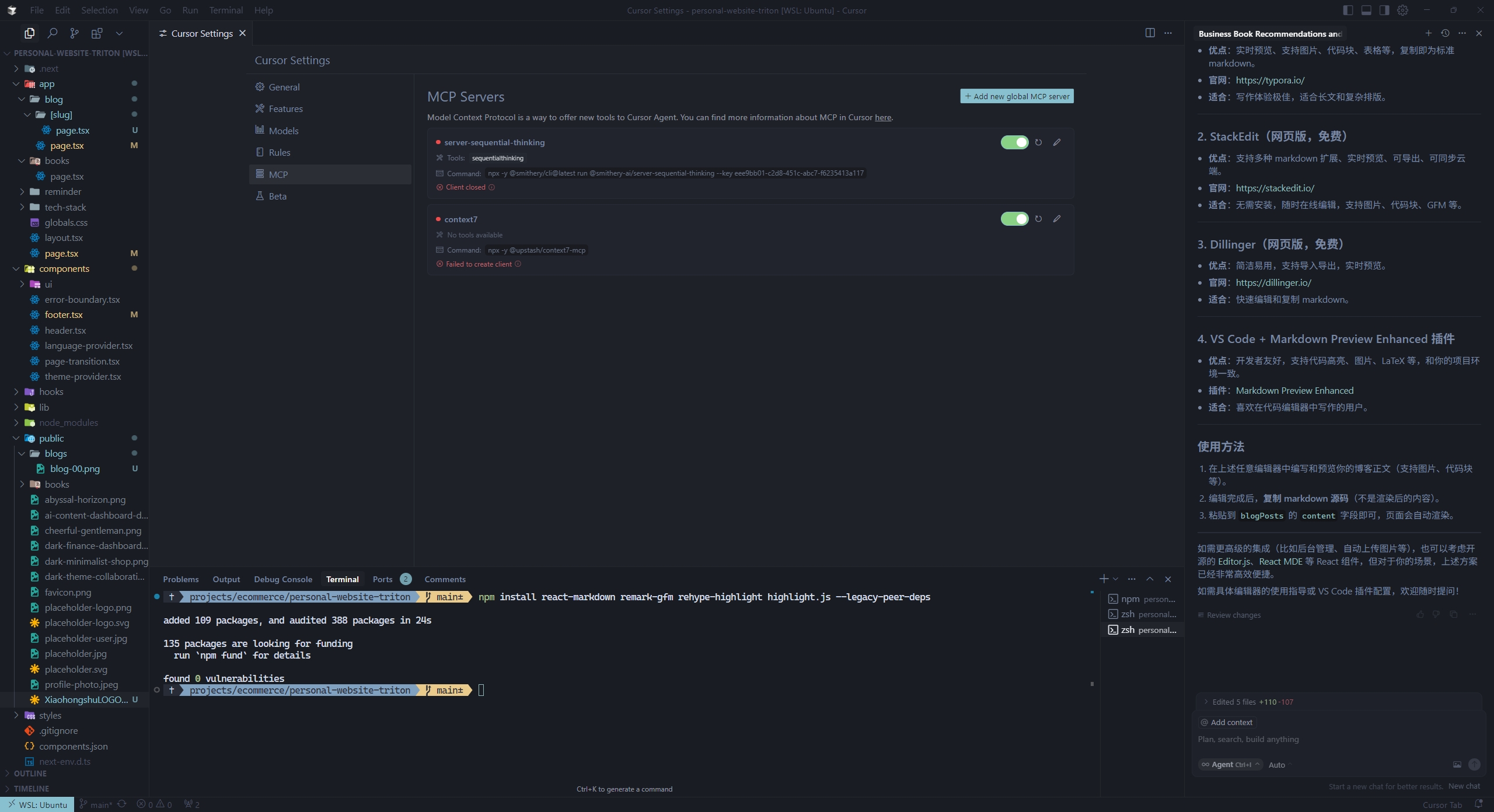Resolving the Cursor AI 'Client Closed' Error: A Complete Guide to MCP Server Connectivity Issues
2024-05-12 · 2 min read · Kai Hui

This guide will help you understand and resolve common issues with Cursor's MCP capabilities. Learn essential troubleshooting steps and best practices for a smooth development experience.
Cursor AI is a powerful coding assistant designed to boost developer productivity through advanced AI features. One of its standout capabilities is the Multi-Context Protocol (MCP), which lets developers extend Cursor's functionality with custom tools and integrations.
However, many users—especially on Windows—run into a frustrating issue when setting up MCP servers: the cryptic "Client Closed" error. This guide walks you through the causes and proven solutions for this problem so you can fully harness Cursor's MCP functionality.
What Causes the "Client Closed" Error in Cursor AI?

When connecting to an MCP server, users may see the following error in the Cursor UI:
Client closed
This vague message makes it difficult to identify what's going wrong. Based on community insights, the issue occurs most often on Windows, and the root causes fall into several categories.
Common Causes of the "Client Closed" Error
1. Command Execution on Windows
On Windows, tools like npx are batch scripts (npx.cmd) that require a command interpreter (cmd.exe). Cursor sometimes tries to run these scripts directly without specifying an interpreter, which leads to the connection failing.
2. WSL and Host Environment Conflicts
Many developers use WSL (Windows Subsystem for Linux), but install Node.js and related tools inside WSL only. Since Cursor runs as a native Windows app, it needs access to these tools in the Windows environment—not just inside WSL.
3. Multi-File MCP Server Complexity
Custom MCP servers built using multiple files or TypeScript can be problematic, especially if they rely on module systems like ESM. Cursor may not handle these setups gracefully without extra preparation.
4. Environment Variable Misconfigurations
If your PATH variable doesn't include the right directories for Node.js or npm, Cursor won't be able to locate the required tools to run your MCP server.
How to Fix It: Step-by-Step Solutions
✅ Solution 1: Prefix Your Command with cmd /c (Windows)
To resolve command interpreter issues on Windows, wrap your npx command like this:
cmd /c npx @agentdeskai/browser-tools-mcp
Or to minimize the command window:
cmd /c start /min npx @agentdeskai/browser-tools-mcp
✅ Solution 2: Run Node.js Directly
You can also bypass npx and run the MCP script directly using node:
node C:\\Users\\<your_user>\\AppData\\Roaming\\npm\\node_modules\\@agentdeskai\\browser-tools-mcp\\dist\\mcp-server.js
✅ Solution 3: Ensure Node.js Is Installed on Windows
If you're working inside WSL, double-check that Node.js is also installed on Windows:
- Download Node.js from the official site: https://nodejs.org/
- Ensure the installation path is added to your Windows
PATH - Verify installation:
node --version
npm --version

✅ Solution 4: Bundle Multi-File MCP Servers
If you're building a custom MCP server with multiple files, bundle it into a single file using a tool like esbuild:
esbuild index.ts --bundle --platform=node --outfile=dist/bundled.js --external:express --external:axios
Then, launch it in Cursor with:
cmd /c node ./dist/bundled.js
✅ Solution 5: Restart Cursor and Your System
Sometimes, a complete restart solves the issue:
- Close all Cursor windows
- Restart your system
- Open Cursor again and re-add your MCP server
Understanding Different MCP Server Types
Identifying what kind of MCP server you're using helps you troubleshoot more effectively:
1. NPM-Based MCP Servers
Examples:
@agentdeskai/browser-tools-mcp@cursor/image-assistant-mcp
Best solution: cmd /c npx ...
2. Custom/Local MCP Servers
Best practices:
- Bundle your code into a single file
- Use
node <path>directly - Handle errors properly in your script
3. Remote (Hosted) MCP Servers
If you're connecting to a remote MCP server (e.g., hosted via Supabase):
- Confirm network access and DNS resolution
- Verify the URL is correct
- Ensure authentication (if needed) is properly set up
Final Thoughts
The "Client Closed" error in Cursor AI's MCP integration can be a major blocker—but it's usually caused by how command-line scripts are run, especially on Windows. With a few simple fixes—such as invoking cmd, bundling your code, or ensuring a proper Node.js setup—you can get your MCP server running smoothly.
As Cursor continues to develop, these issues may become less common. In the meantime, these workarounds will keep you productive and help you get the most out of Cursor's powerful AI development tooling.